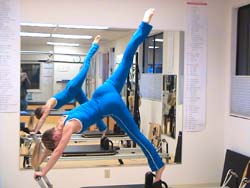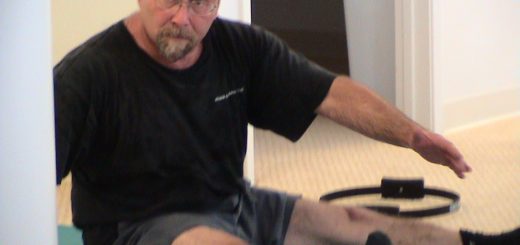Get Moving with Pilates
Pilates
Pilates is great for building core strength and stability because the focus is on muscular balance and using your deep, stabilizing muscles that act directly on your spine, pelvis, and shoulder blades. Keep in mind that there is a learning curve with Pilates; it is essential to take the time to learn the basics. Give yourself 4 or 5 times of trying it before you decide if it’s for you; it often takes that long before it all comes together and you start to feel like your body is actually doing what you want it to do.
What is Pilates?
Before this question can be answered, it is helpful to know about the man who created it. Joseph Humbertus Pilates was born in 1880 near Dusseldorf Germany. He had numerous health problems as a child including rickets, asthma, and rheumatic fever. He became obsessed by his afflictions and determined to overcome them. As a teenager, he became very active and participated in gymnastics, skiing, and skin diving and became very interested in studying the musculature of the body. His studies also included Eastern forms of exercise including yoga and karate. He merged these experiences to create “The Method”. Pilates called it Controlology which is a precise series of exercises designed to develop the body uniformly, correcting incorrect posture and revitalizing the body, mind and spirit.
In 1912, Joseph moved to England where he became a boxer, circus performer, and self-defense instructor. When World War I started, he was incarcerated as a German national and an enemy alien. While in prison, many inmates followed his method and he continued to perfect it. They found that they were unaffected by the influenza epidemic and realized some greater health benefits from this work. Joseph decided to find a way to help those in the prison camp who were disabled by other wartime diseases. He removed the bedsprings from the beds and attached them to the walls allowing them to exercise while lying down and remain stable yet strengthen their muscles without worsening any injuries.
When WWI ended, he returned to Germany to continue to develop his work, but he left again in 1926 when his ideals clashed with the new German regime. Joseph immigrated to the United States. Along the way, he met Clara, a nurse, who became his wife. They became friends with Max Schmeling, a boxer, who led them to New York. It is here where they opened a “physical fitness studio”. He was warmly welcomed by the New York dance community, and his method quickly became part of the dancers’ training as well as being used to rehab injured dancers.
Joseph Pilates died in 1967, and most of the original instructors he trained have also passed, but the basics of his work have not changed. He wanted his work to benefit the masses and not only an elite group of individuals. He states that the exercises need to be done exactly as written in order to achieve a fit and balanced body.
In 1945, Joseph published his exercises. He prescribed 34 exercises to be done faithfully four times per week; he promised that after three months, your body would return to an ideal physical condition with renewed mental vigor and spiritual enhancement. Exercises can be done on a mat with no equipment (known as matwork); this is the most typical and most accessible form. Exercises can also be performed on a Reformer or a Cadillac machine; this is usually done on a one-on-one basis with a qualified instructor and requires a strong foundation in the matwork exercises.
The reason Pilates seems to have “suddenly appeared” in the past few years is that prior to October 2000, the Pilates name was patented and trademarked by the owner of the New York based Pilates studio. However, in October of 2000, a New York Federal court that Pilates was associated with a type of exercise so the name could no longer be monopolized. This opened the doors for others to provide training and take advantage of Joseph’s work.
Benefits of Pilates
Pilates is a functional form of exercise; it trains the muscles of the body to gain strength in the way they were designed to perform.
Breathing – Pilates has a very specific method of breathing that helps to purify the body, reduce stress, and build endurance
Core strength is one of the most important benefits because all movement starts from the core. When your core is strong, your limbs can move without adding excess strain to your spine and also helps improve balance and coordination.
Strengthens opposing muscle groups – this allows the entire body to function more efficiently and leads to improved flexibility
Improves kinesthetic awareness – this means you have a better sense of where your body is in space. Spatial awareness and core control help improve your functioning in daily activities, prevent injuries, and facilitate rehabilitation.
Stress reduction – the application of mind over muscle is an important concept in Pilates as well as other mind body exercises. This has been shown to help reduce stress.
Disease prevention – his fellow inmates experience this during the influenza outbreak. When the mind is trained to listen to the body, it is more capable of identifying and dealing with stresses that may eventually cause disease.
More:
* Armchair Pilates
* Core/Functional Training Information and Resources
* Frequently Asked Questions about Pilates
* Mind/Body Training
* Pilates Resources
* Stability Balls
* What Pilates Does for You: Results from the Lab
source: http://www.nwhealth.edu/healthyU/getMoving/pilates2.html


